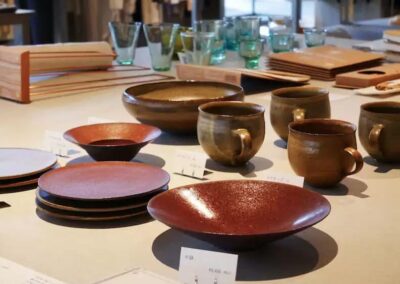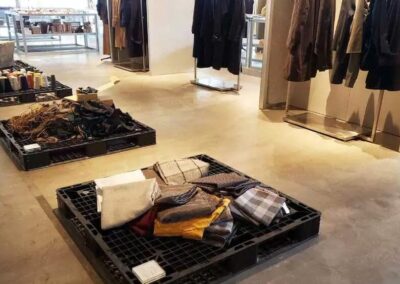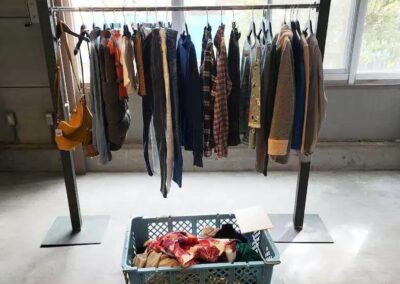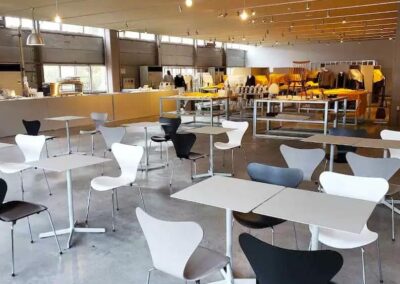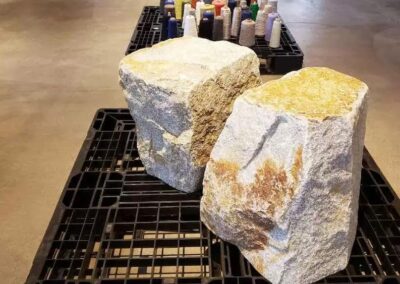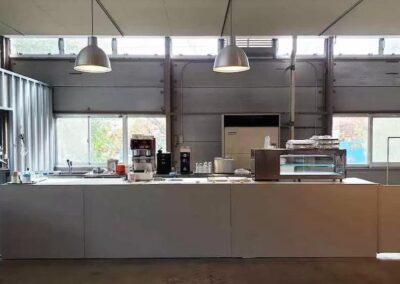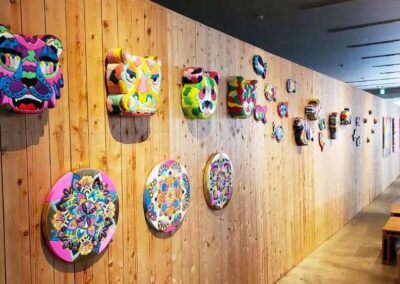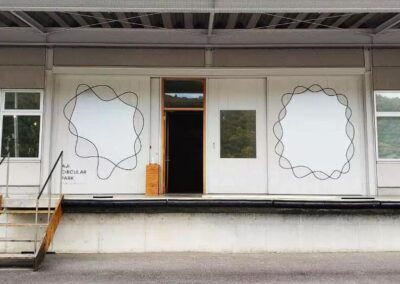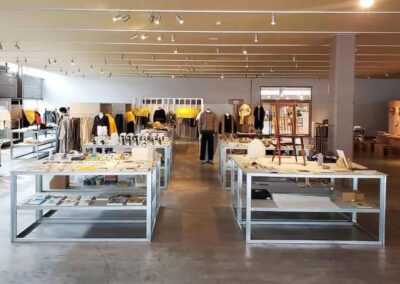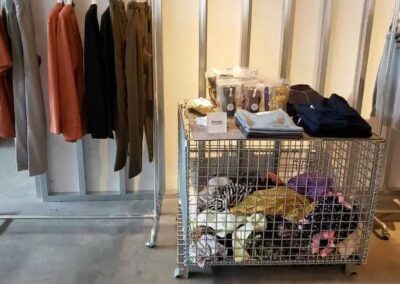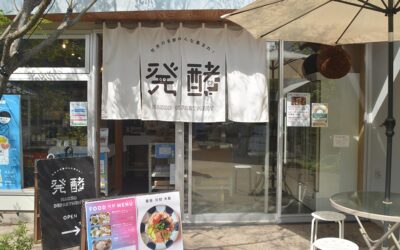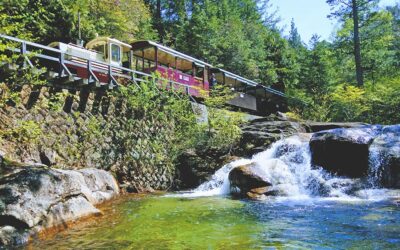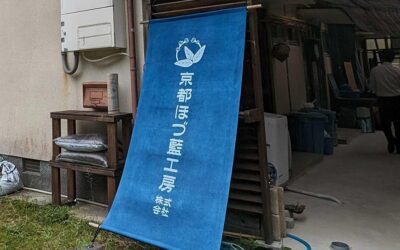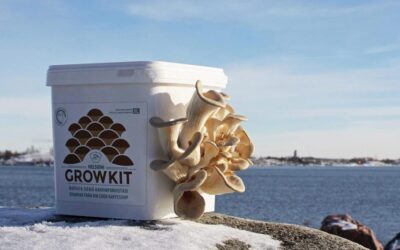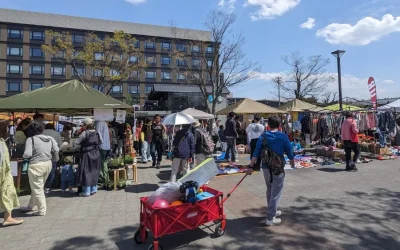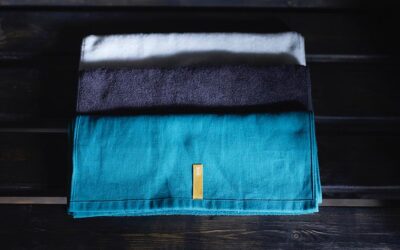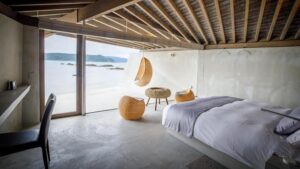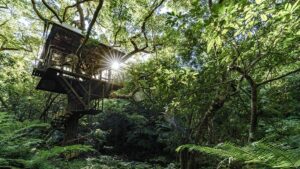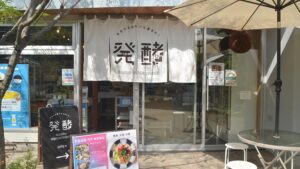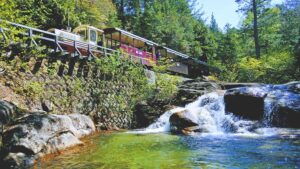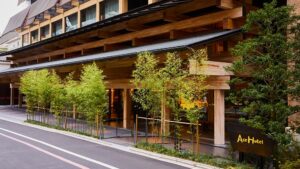A welcoming place for everyone that is designing circularity within Seto Inland Sea
Do you know “Aji Stone,” also known as the “diamond of granite,” often said to be the most expensive stone in Japan? Aji Stone, produced in Aji and Mure Towns, located in the northeast of Takamatsu City, Kagawa Prefecture, has been used in various places, including the reconstruction of Ishiyama-dera Temple in ancient times and currently in the Prime Minister’s Official Residence.
Isamu Noguchi, a leading sculptor of the 20th century who was fascinated by the beauty of Aji Stone, established a residence and studio in Mure Town in 1969, and continued his creative activities while commuting between New York and Mure Town for over 20 years.
In 2022, a lifestyle communication and creation base with the theme of circular economy was established in the production area of Aji Stone. It is called “AJI CIRCULAR PARK” and opened by Naka Shoji Co. Ltd., a long-established textile trading company and manufacturer in Aji Town.
The concept of AJI CIRCULAR PARK is “Gather, Connect, and Circulate.” It is a place where various encounters are created for enjoying a community-based circular lifestyle, such as a cafe with a theme of local production for local consumption and waste reduction, a lifestyle shop where you can purchase locally-made Setouchi products, and carefully selected sustainable products from Japan and overseas, as well as selling surplus materials and scraps from the manufacturing process of clothing and miscellaneous goods, and a free exchange of second-hand clothing.
In addition, art workshops utilizing waste materials are also held on weekends, and the space is designed to create connections with local people through experiences, not just purchases, resulting in a system where local resources can circulate. As the name “PARK” suggests, it is a space where children can also enjoy themselves.
We interviewed Takafumi Naka, the representative of Naka Shoji Co. Ltd., to learn about the park’s background and his thoughts behind opening the facility, as well as future developments.
Motivation driven by microplastics in the Seto Inland Sea
Naka Shoji, is a long-established company in Aji that celebrates its 100th anniversary this year. It was founded in 1923 as a kimono retail business in Aji Town, Kida County, and Nakashoten Co. Ltd. was established in 1951. Takafumi Naka, the current representative of Naka Shoji, is the third generation to take over the company from his grandfather.
After graduating from university in Tokyo, Naka worked for a textile trading company in Osaka for four years before returning to Naka Shoji, where he became the representative in 2014. He is also a father of two who loves fishing in his private life.
In addition to the textile wholesale business that has been operating since its establishment, Naka Shoji also handles the planning, manufacturing, and retailing of its own knitwear products. The company is committed to sustainability, such as developing and expanding the organic cotton-based fashion brand “nofl,” and introducing renewable energy.
So why did Naka become interested in the theme of “circular economy” and open AJI CIRCULAR PARK?
Naka: “The reason I became interested in environmental issues was because of the microplastics problem. Growing up in an environment where the Seto Inland Sea was nearby, I naturally became concerned about the problem of marine litter, and I participated in sea surveys as a volunteer several times to learn about the current situation of microplastics and waste. Children also participated in the volunteer activities, and I had been thinking about how to connect the beauty of the Seto Inland Sea’s scenery and nature with the children for a long time.”
“In addition, I heard that the apparel industry is one of the industries with a high environmental burden, second only to the petroleum industry, as sustainability becomes a global trend in the industry. Therefore, we felt that we needed to do something as a company, and we conducted workshops to learn about sustainability around the world within the company. It was during those workshops that I first heard the term ‘circular economy’ and became interested in it.”
In an age of products and information overflow, what we should be “connecting”
After learning about the current situation of microplastic waste in the Seto Inland Sea and exploring their own efforts as a company, Nake decided to create a space of circularity like AJI CIRCULAR PARK instead of continuing traditional trading and manufacturing practices.
Naka: “The origin of Naka Shoji was as a wholesale dealer, and at a time when goods were scarce, it was important for trading companies to efficiently distribute goods and information to promote local prosperity. This was also our job. However, as goods and information became more abundant and easily accessible, the role of the wholesale dealer became less meaningful. Moreover, when I took over the company, its performance was also struggling.”
“In thinking about the next growth, I felt that Naka Shoji had always made the world a better place by ‘connecting’ something, so I wanted to continue the role and values of the company passed down from my grandfather’s generation. However, the things we connect have changed over time. In a way, what we’re trying to do now is simply changing the form of what Naka Shoji has always done, to make the region better and help it grow.”
As a result of pursuing expansion and growth, we see the overflow of things, information, and waste in modern society. We have lost many things in exchange for convenience. This includes connections between people and people, producers and consumers, and local culture and natural environment, which can only be obtained through sharing physical space and time.
AJI CIRCULAR PARK aims to restore various connections that have been inadvertently broken, such as those between people and people, producers and consumers, and humans and nature, by utilizing waste and underutilized resources in the region, exchanging second-hand clothing, and holding workshops.
Naka: “Circulation cannot be achieved by one person or one company alone. We need a place to connect. Also, to leave this beautiful Seto Inland Sea to our children, we need to create a circular economy, not a linear one. That’s why we created AJI CIRCULAR PARK.”
In reality, in order to circulate resources in the region, connections between people are indispensable. When people with different perspectives and preferences gather, the potential for someone’s waste to be valued as someone else’s resource increases. And such experiences awaken new creativity in people, becoming the engine for further circulation. What is lacking in creating a better society and community is such connections.
A place where both children and adults can enjoy
The concept of AJI CIRCULAR PARK is “Gather, Connect, Cycle.” It aims to create a space where people come together and various things circulate based on the theme of “circularity.” The cafe offers delicious coffee and bagels made from local ingredients, while the shop features products selected based on six themes: Local, Recycle, Reduce, Reuse, Universal, and Natural. These products include local and Setouchi-produced items, sustainable products from Japan and abroad, books, secondhand clothing, and sustainable apparel brands.
In the clothing area, there are collection corners for clothes and a free exchange corner for secondhand clothing, as well as shelves selling reused goods collected from local people and items made from waste material. The display of both secondhand and new clothing together is particularly interesting.
The park’s AJI PROJECT features stools made of Aji stone by Aji stone craftsmen who promote the charm of Aji stone. Additionally, the park sells materials leftover from the knitting factory of the parent company, Naka Shoji, and from other local manufacturing companies, stimulating the creativity of creators who wish to use these waste materials to create something new.
Furthermore, the park follows circular design principles even in the fixtures and fittings, such as repurposing the structural materials of the warehouse that were previously unused and could be used again for their original purpose after dismantling. Surrounding the space are wooden pallets that are no longer needed.
Naka: “I gave the name ‘PARK’ because I wanted it to be a place where people could gather for their own purposes, like any park. At the market, I want to create a place where producers and consumers can connect. I think that by connecting local manufacturing companies in Setouchi with consumers, something different can emerge. In the workshops, I want to create something that is enjoyable and entertaining, but also serves as an opportunity for people to become interested in circularity and the environment, such as using discarded fabrics.”
When we visited, there was an art workshop using waste and surplus materials by the artist Ikemizu Asako. Many children and adults were engrossed in the activity. The admission ticket for this workshop is an unwanted piece of clothing. It’s unique in that it emphasizes cooperation in resource circulation, rather than payment.
Naka: “The name contains the word ‘CIRCULAR,’ but we’re not just targeting people who like sustainability or eco-friendliness. We’re creating a place where anyone can have fun and be interested, regardless of their knowledge of these topics. We hope families and others can visit the park casually and enjoy themselves.”
Whether you want to eat, shop, create, or connect, AJI CIRCULAR PARK is a place where you can spend time according to your own preferences and interests, regardless of your interest in a circular lifestyle.
Peninsulas and islands are outside of efficiency. That is why there is meaning in doing it
Naka has another motivation behind the concept of establishing a base for the “Circular Economy” in Aji.
To the immediate northwest of Aji town, on a peninsula that juts out from Takamatsu city, lies Oshima, which accepted leprosy patients who were forcibly isolated for over 90 years as part of a national policy, and further above that is Teshima, which became the site of Japan’s largest illegal dumping of industrial waste. Because it is a place burdened with such history, there is a significance in transmitting the transition to a circular economy.
Naka: “Aji town is on a peninsula, and so are Oshima and Teshima, but these places are always outside of the realm of ‘efficiency,’ and ultimately, the negative consequences of ‘efficiency’ end up in such places. That is why I think that is a reason to do circulation in Aji.”
When trying to create an efficient system, people who do not fit the mold or waste that is difficult to process are pushed out of the system. This is the history of peninsulas and islands burdened with such negative externalities. On the other hand, as it has become impossible to push these negatives to the “outside,” and they have surfaced as various problems such as climate change and inequality, there is a need for a new circular economy as a system that internalizes externalities.
Looking at it that way, the spot that emerged in Aji town aiming for a new circular economic and social system, AJI CIRCULAR PARK, also has great significance as a place that symbolizes a turning point in history.
Naka: “Because it is outside of efficiency, there may be an atmosphere and way of life that is not in line with the current trends. If you consider efficiency, it is much more convenient to live in the city than to live in the Aji community. There is only one convenience store, and there are hardly any places to eat. Nevertheless, everyone is living in Aji, which makes me think that they want to be in a place that is not in line with the flow of efficiency and capitalism, and that it may be more comfortable there. I think there is a place like Aji where you can return to the original human activities, atmosphere, and sensations by being a little out of step with capitalism.”
“Also, Oshima and Teshima are really beautiful, and such places are often the most beautiful. I wonder why such places carry the ‘negative.’ Perhaps beautiful things exist outside of the center of the economy.”
Delve deeper into local circulation to reveal the unique characteristics of the region.
AJI CIRCULAR PARK began with a new vision of redefining the value of “connecting” that Naka Shoji has been working on since its establishment, in line with the current era and social background, to revitalize and improve the region through circulation. What kind of future does Naka envision creating through this place?
Naka: “I have never wanted to do something big myself or leave my name behind. Instead, I hope to play a role where I can pass the baton to the next generation. I want this region to remain rich forever, and I want children and future generations to continue connecting the beautiful Seto Inland Sea.”
“One thing that I think would be interesting in this world is that each region has its own unique characteristics. AJI CIRCULAR PARK has a concept of ‘local circulation.’ This means that if we are going to circulate something, it is best to do it as close to the source as possible. Since each region has its own unique resources, if we pursue circulation within the region, the region’s uniqueness will naturally emerge. I love traveling to different regions and experiencing their unique cultures. I think it would be a good future for Japan to become a collection of such regions.”
Rather than “achieving” something, Naka wants to play a role in “connecting” the richness of the Seto Inland Sea to the next generation. By pursuing circulation within the region, the uniqueness of each region will naturally emerge, allowing people to enjoy the local culture, food, and other characteristics. Naka’s vision for a circular economy is firmly grounded, with the region and children always at the center.
Originally published on IDEAS FOR GOOD.

